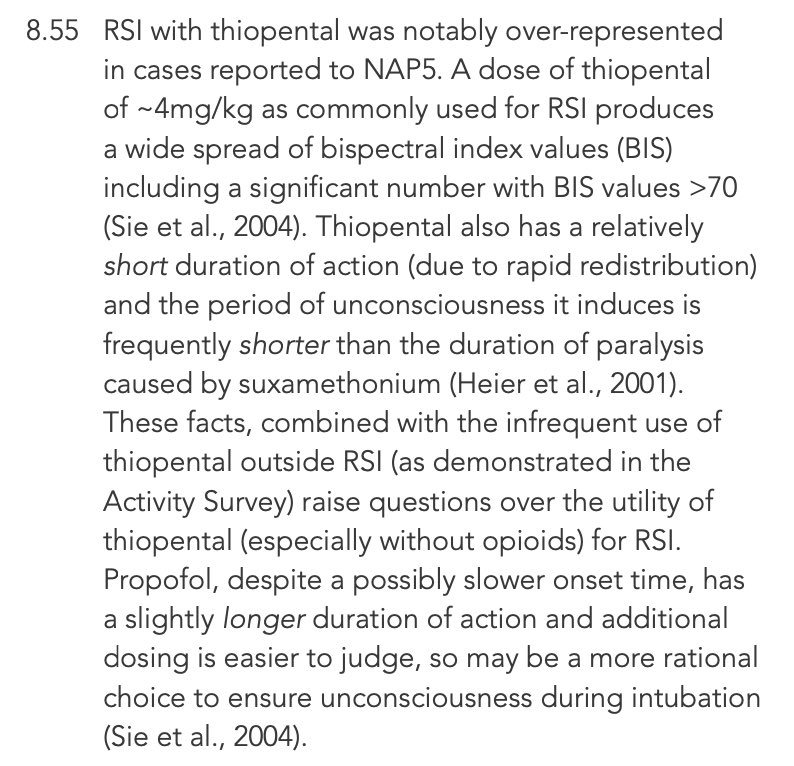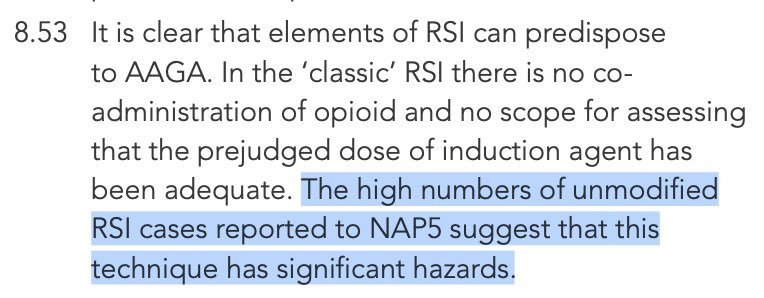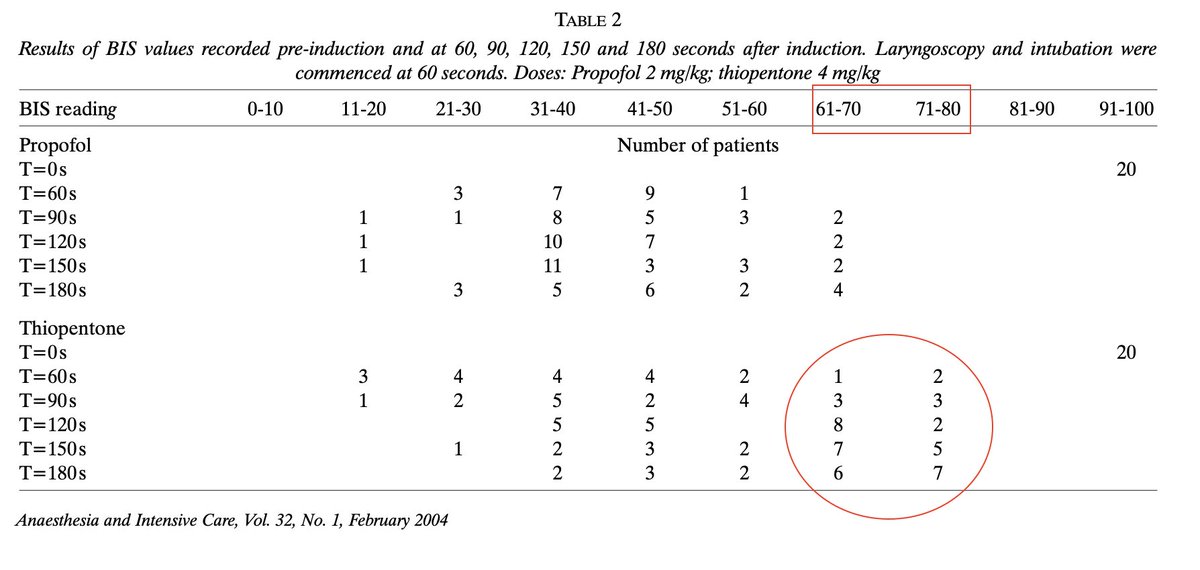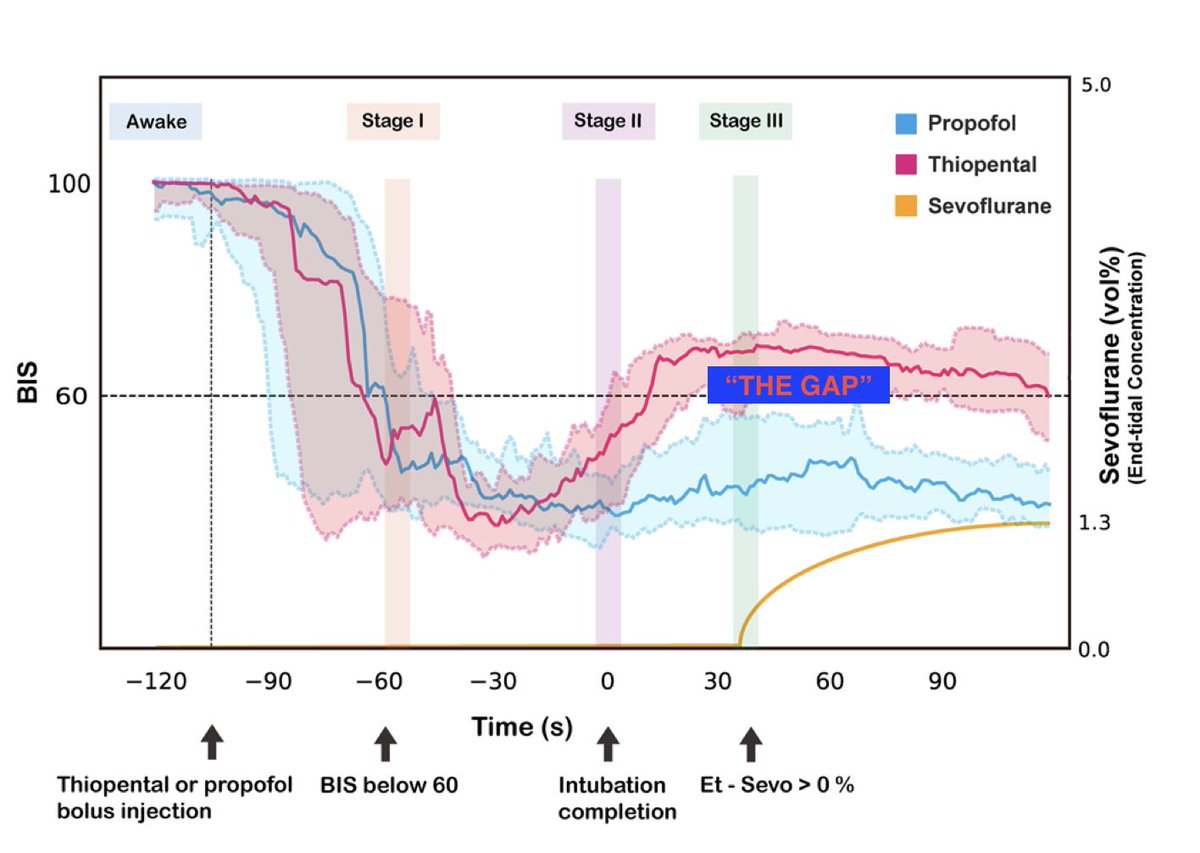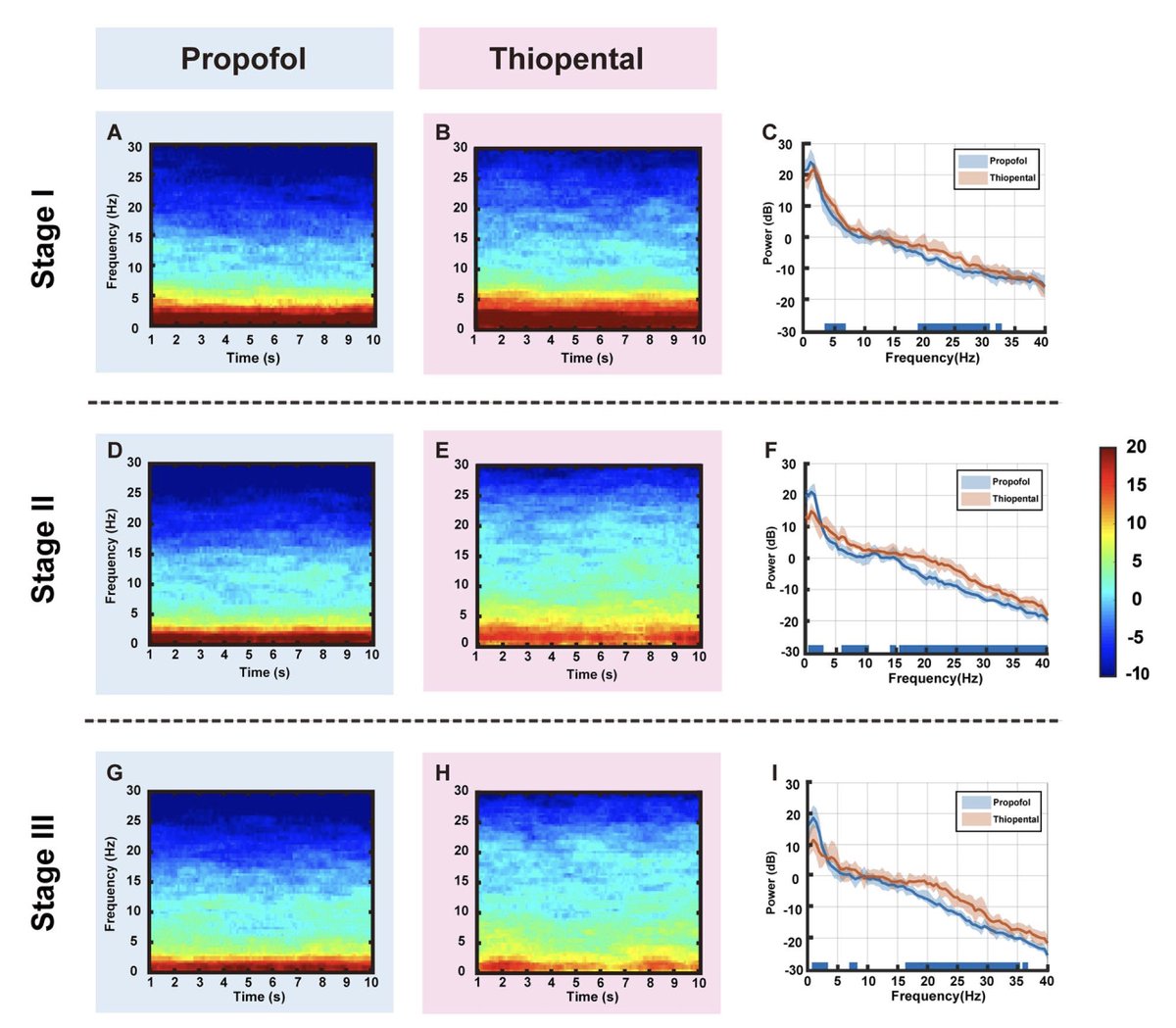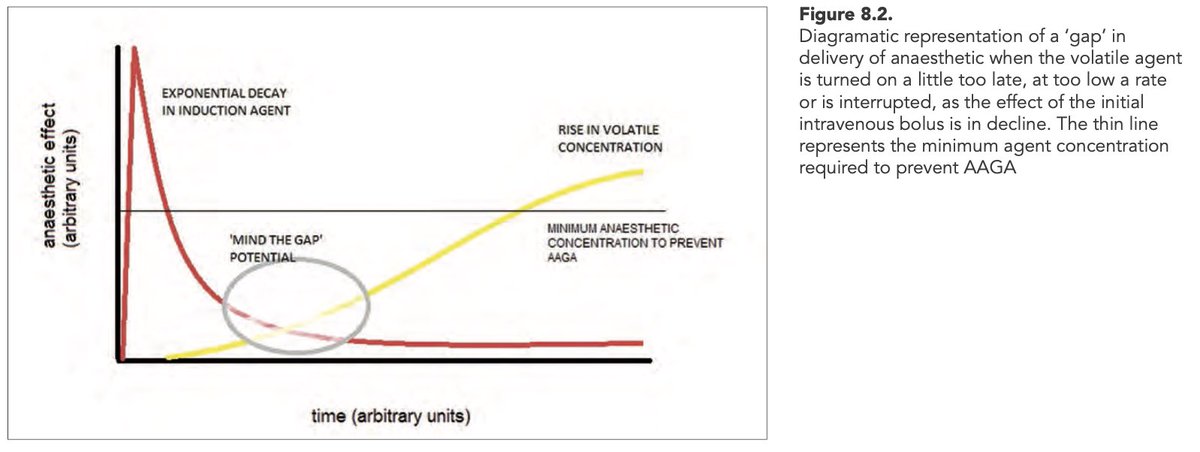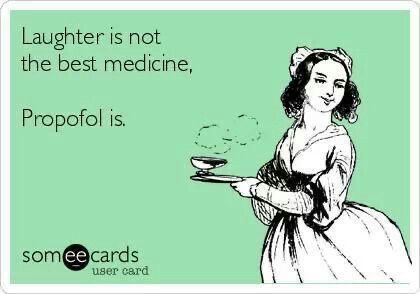Characteristic bold claim from Marc  https://abs.twimg.com/emoji/v2/... draggable="false" alt="😘" title="Face throwing a kiss" aria-label="Emoji: Face throwing a kiss">.
https://abs.twimg.com/emoji/v2/... draggable="false" alt="😘" title="Face throwing a kiss" aria-label="Emoji: Face throwing a kiss">.
C-19 has encouaged me to use Thio again, with the benefit of pEEG (and a bit of geekiness) I thought I& #39;d have a look at this.
This might be an interesting thread or turn into a new induction technique by itself. https://twitter.com/quartered_onion/status/1260129838758801408">https://twitter.com/quartered...
C-19 has encouaged me to use Thio again, with the benefit of pEEG (and a bit of geekiness) I thought I& #39;d have a look at this.
This might be an interesting thread or turn into a new induction technique by itself. https://twitter.com/quartered_onion/status/1260129838758801408">https://twitter.com/quartered...
Given a potential shortage of Propofol and Roc, I’ve reverted back to volatile anaesthesia. Hopefully temporarily. Fewer planes in the sky will offset my increased carbon footprint  https://abs.twimg.com/emoji/v2/... draggable="false" alt="🤔" title="Thinking face" aria-label="Emoji: Thinking face">. Maintaining skills is good. TST here we come…!
https://abs.twimg.com/emoji/v2/... draggable="false" alt="🤔" title="Thinking face" aria-label="Emoji: Thinking face">. Maintaining skills is good. TST here we come…!
I do like a bit of pEEG for all my anaesthetics. Odd that we routinely monitor every surrogate of anaesthetic effect - but not the target organ of our core drugs. I wonder if we& #39;re unique in that regard. We’ve been evaluating the #narcotrend so consumables are pennies (No COI).
So, with that in mind, what does a TST RSI look like? (with a bit of Alf - I’m a big boy now…). This is reflects experience so far.
This this the awake EEG. Lovely fine, low amplitude B-waves. Correctly classified Stage A whilst preoxygenating
Don& #39;t look at the rest yet…
This this the awake EEG. Lovely fine, low amplitude B-waves. Correctly classified Stage A whilst preoxygenating
Don& #39;t look at the rest yet…
Around 50 seconds post Alf 1mg, a pre-calculated "sleep*” dose (475mg) STP and 150mg sux.
Lovely big delta waves and some theta. This is consistent with unconsciousness. pEEG classified as D2 - seems appropirate. Young patient so Burst Supp. less likely.
[sleep ≠ anaesthesia!]
Lovely big delta waves and some theta. This is consistent with unconsciousness. pEEG classified as D2 - seems appropirate. Young patient so Burst Supp. less likely.
[sleep ≠ anaesthesia!]
Straight forward Glidescope DVM intubation - no strong left arm needed! ETCO2  https://abs.twimg.com/emoji/v2/... draggable="false" alt="✔️" title="Heavy check mark" aria-label="Emoji: Heavy check mark"> and onto Sevo (start at 8%). Look at the Beta - arousal! EEG now showing loss of delta activity, and increased beta. This is sedation - not anaesthesia! Seen this several times with STP... why?
https://abs.twimg.com/emoji/v2/... draggable="false" alt="✔️" title="Heavy check mark" aria-label="Emoji: Heavy check mark"> and onto Sevo (start at 8%). Look at the Beta - arousal! EEG now showing loss of delta activity, and increased beta. This is sedation - not anaesthesia! Seen this several times with STP... why?
Now; cortical arousal doesn& #39;t indicate AAGA per se. There& #39;s suggestion that new memory formation takes >30 seconds of “conciousness". Dutton et al did some brave work - try getting this through ethics now…
Even positive isolated forearm doesn& #39;t equate to consciousness... but it’s clear that movement is a valuable warning of an inadequate anaesthetic state. From Jamie Sleigh:
Musings to continue when the kids are asleep! (Physiological sleep rather than pharmacological!)
The process of induction requires a brain state change from awake - overcoming neural inertia - to anaesthetised (dynamically related to the stimulus applied to the patient. It& #39;s often forgotten that intubation is the most stimulating thing…
…yet less noxious stimuli are clinically acceptable end-points for LoC (mOAA/S - below) although papers choose inconsistant points. (define "mild prodding”…)
Back to Thio and cortical arousal… you& #39;d think this would be a keenly researched area. I& #39;m always mindful that there is always a bigger geek :) One has to look back in time a little.
20 patients; equipotent induction dose of Thio http://6mg.kg"> http://6mg.kg vs Prop http://3mg.kg"> http://3mg.kg - 50% N2O / Vec http://0.2mg.kg"> http://0.2mg.kg . EEG recording, intubation at 3 mins post induction; thick line is Thio…
Sustained rise in beta oscillations and drop in delta - that& #39;s beta arousal! Up to 1000% and sustained to minute 5. Just like I saw in the relative band frequency pics!
Why…  https://abs.twimg.com/emoji/v2/... draggable="false" alt="🤔" title="Thinking face" aria-label="Emoji: Thinking face">. It& #39;s down to nociception (we know propofol has an analgesic effect…). Anaesthesia is a triad after all - the classic opiate-free RSI would be a beta-arousal nightmare @Rollo002 can you see where this is heading...
https://abs.twimg.com/emoji/v2/... draggable="false" alt="🤔" title="Thinking face" aria-label="Emoji: Thinking face">. It& #39;s down to nociception (we know propofol has an analgesic effect…). Anaesthesia is a triad after all - the classic opiate-free RSI would be a beta-arousal nightmare @Rollo002 can you see where this is heading...  https://abs.twimg.com/emoji/v2/... draggable="false" alt="🤓" title="Nerd face" aria-label="Emoji: Nerd face">
https://abs.twimg.com/emoji/v2/... draggable="false" alt="🤓" title="Nerd face" aria-label="Emoji: Nerd face">
NAP5 noted an increased incidence of AAGA in RSI with STP - 8.21 RSI over represented… 8.22 "more 2/3rds of patients received opioids during RSI, but of AAGA cases involving RSI, only 1/3 received opioids.”
STP& #39;s lack of anti-nociception creates cortical beta arousal apparent on EEG; withholding opioids likely exacerbates this (what does it do for ICP/CBF…?). Does anyone still teach the "classic RSI”?
Sie et al used the BIS and showed the same thing - sustained rise with STP (lots of beta oscillations trigger the BetaRatio algorithm and generate values >60).
Especiallly for @rollo and @dmlevy - an Obs twist. Superb work from Park et al, who have a digital anaesthetic system which records everything… :) LSCS under GA with thio vs propofol - the pEEG gap is visible (cortical arousal again!) https://www.nature.com/articles/s41598-020-62999-5">https://www.nature.com/articles/...
And if you like a DSA trace (and who doesn’t…?) if there’s more sea than sky the brain is aroused… (electrophysiologically speaking!)
And all that is going on BEFORE the vapour has reached a useful ET concentration (which is a myth to bust another day!). So “The Gap" isn& #39;t just induction agent effect decay and rise in ETAA, but (with STP) all that AND cortical arousal!
So I& #39;m not sure I agree with @quartered_onion this time - STP is not a superior induction agent; creating conditions of cortical arousal and a electrophysiological gap which relies on ETAA equilibrium to fill (slower than you& #39;d like when watch the EEG!)

 Read on Twitter
Read on Twitter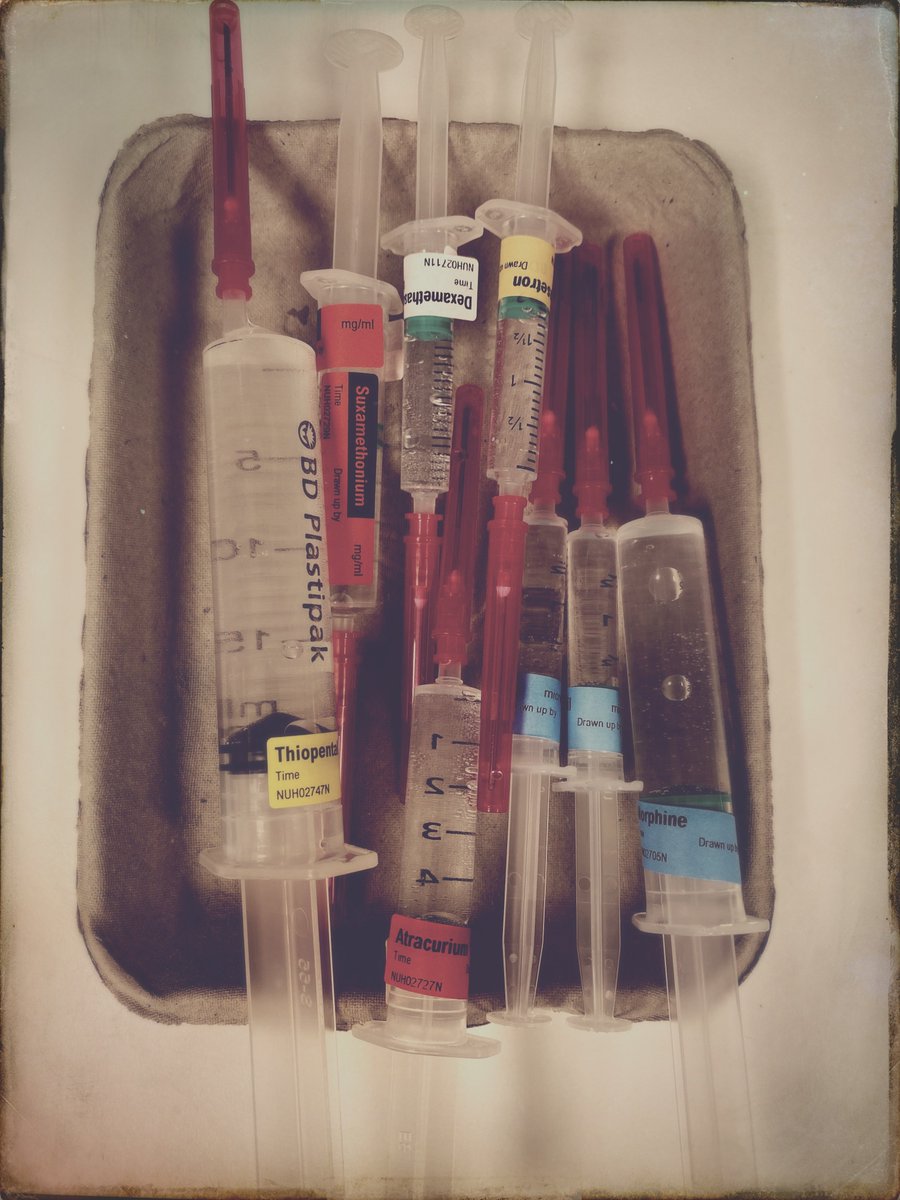 . Maintaining skills is good. TST here we come…!" title="Given a potential shortage of Propofol and Roc, I’ve reverted back to volatile anaesthesia. Hopefully temporarily. Fewer planes in the sky will offset my increased carbon footprint https://abs.twimg.com/emoji/v2/... draggable="false" alt="🤔" title="Thinking face" aria-label="Emoji: Thinking face">. Maintaining skills is good. TST here we come…!" class="img-responsive" style="max-width:100%;"/>
. Maintaining skills is good. TST here we come…!" title="Given a potential shortage of Propofol and Roc, I’ve reverted back to volatile anaesthesia. Hopefully temporarily. Fewer planes in the sky will offset my increased carbon footprint https://abs.twimg.com/emoji/v2/... draggable="false" alt="🤔" title="Thinking face" aria-label="Emoji: Thinking face">. Maintaining skills is good. TST here we come…!" class="img-responsive" style="max-width:100%;"/>
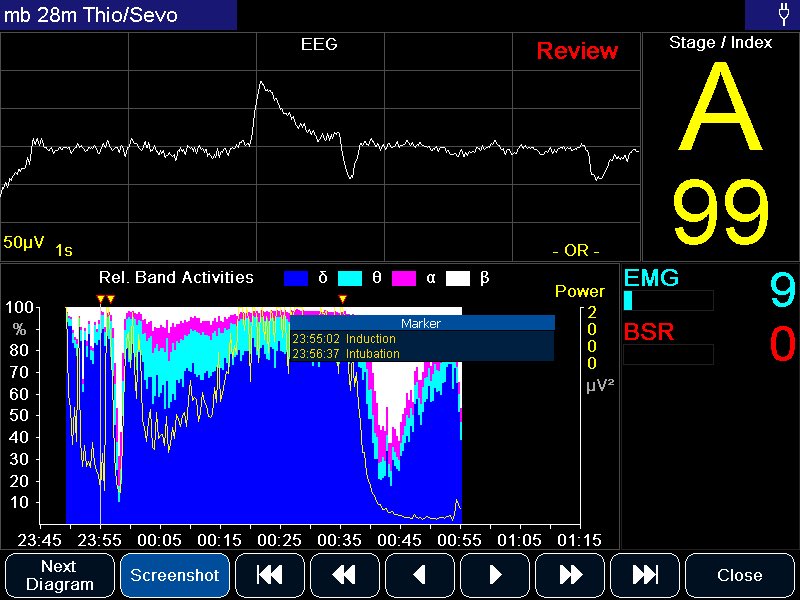
![Around 50 seconds post Alf 1mg, a pre-calculated "sleep*” dose (475mg) STP and 150mg sux.Lovely big delta waves and some theta. This is consistent with unconsciousness. pEEG classified as D2 - seems appropirate. Young patient so Burst Supp. less likely.[sleep ≠ anaesthesia!] Around 50 seconds post Alf 1mg, a pre-calculated "sleep*” dose (475mg) STP and 150mg sux.Lovely big delta waves and some theta. This is consistent with unconsciousness. pEEG classified as D2 - seems appropirate. Young patient so Burst Supp. less likely.[sleep ≠ anaesthesia!]](https://pbs.twimg.com/media/EX6Km4QWsAAa9Z0.jpg)
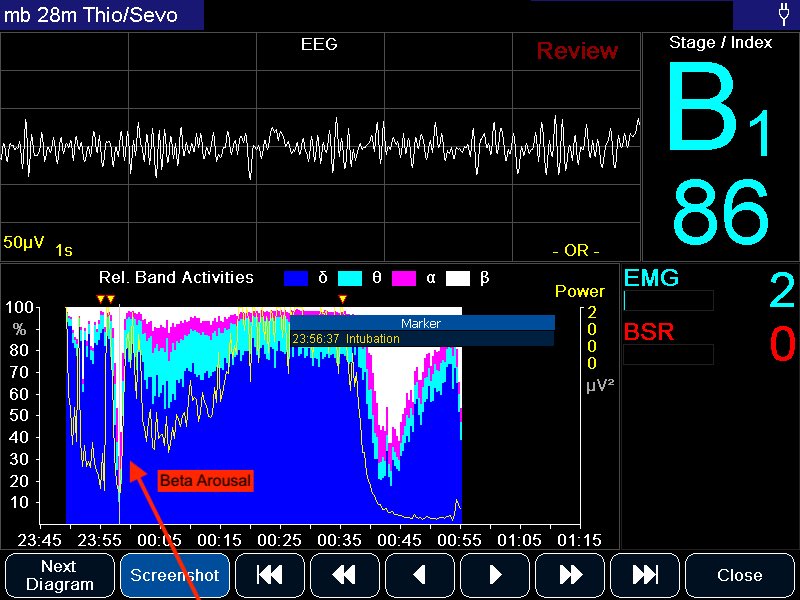 and onto Sevo (start at 8%). Look at the Beta - arousal! EEG now showing loss of delta activity, and increased beta. This is sedation - not anaesthesia! Seen this several times with STP... why?" title="Straight forward Glidescope DVM intubation - no strong left arm needed! ETCO2 https://abs.twimg.com/emoji/v2/... draggable="false" alt="✔️" title="Heavy check mark" aria-label="Emoji: Heavy check mark"> and onto Sevo (start at 8%). Look at the Beta - arousal! EEG now showing loss of delta activity, and increased beta. This is sedation - not anaesthesia! Seen this several times with STP... why?" class="img-responsive" style="max-width:100%;"/>
and onto Sevo (start at 8%). Look at the Beta - arousal! EEG now showing loss of delta activity, and increased beta. This is sedation - not anaesthesia! Seen this several times with STP... why?" title="Straight forward Glidescope DVM intubation - no strong left arm needed! ETCO2 https://abs.twimg.com/emoji/v2/... draggable="false" alt="✔️" title="Heavy check mark" aria-label="Emoji: Heavy check mark"> and onto Sevo (start at 8%). Look at the Beta - arousal! EEG now showing loss of delta activity, and increased beta. This is sedation - not anaesthesia! Seen this several times with STP... why?" class="img-responsive" style="max-width:100%;"/>
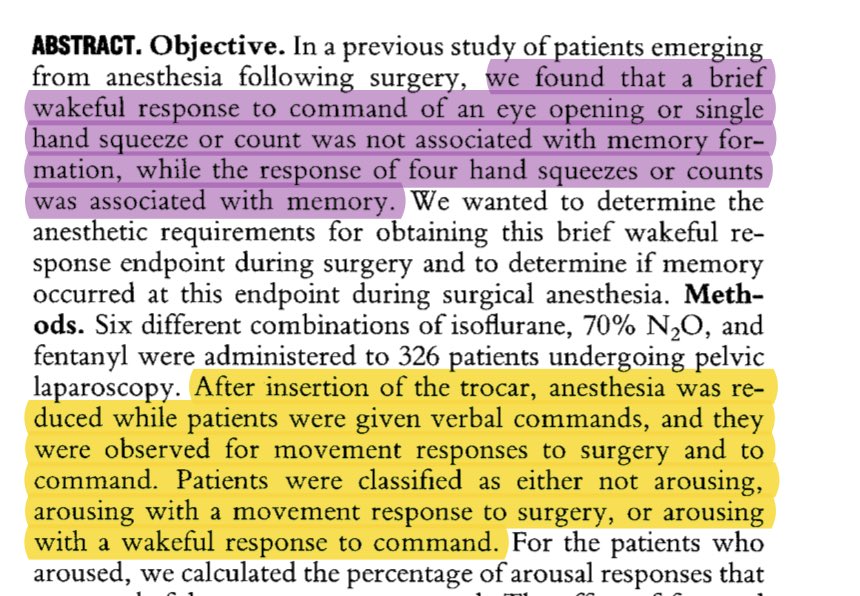
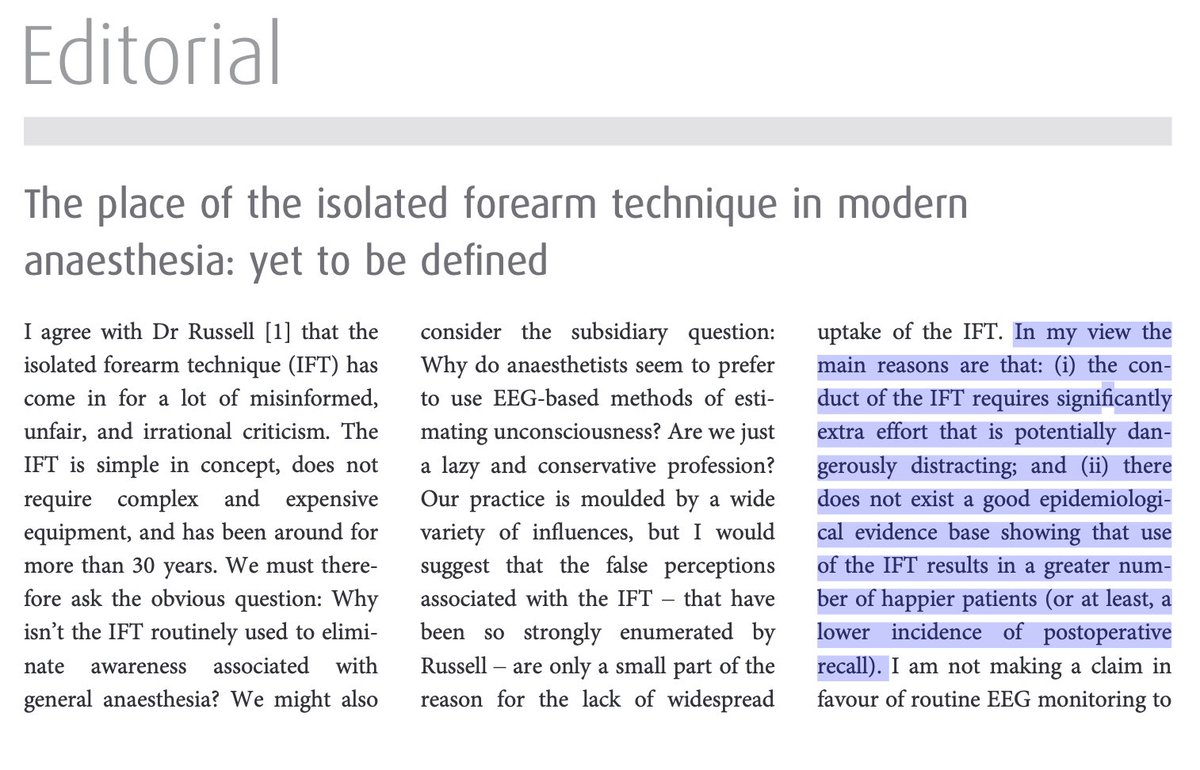
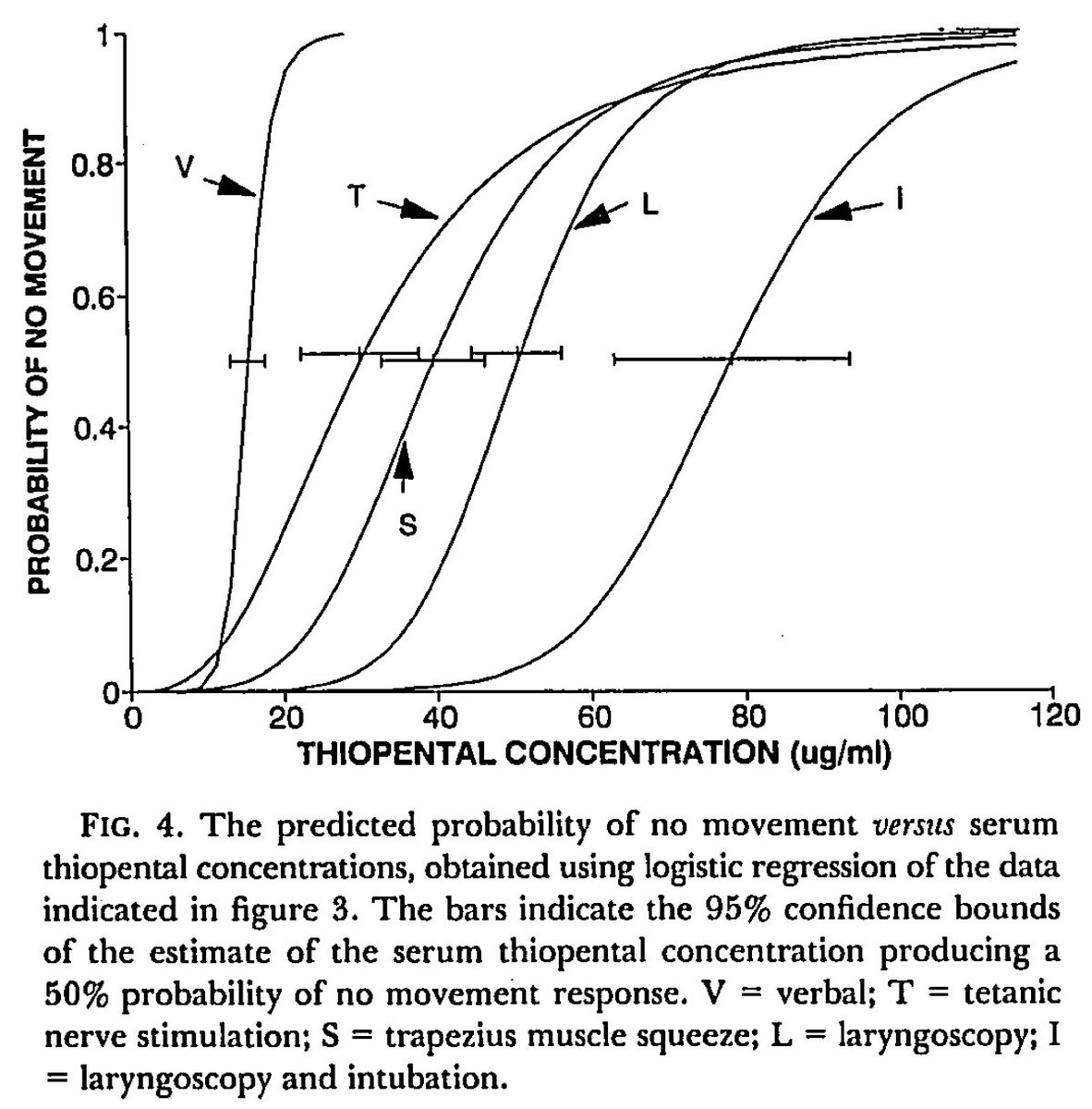
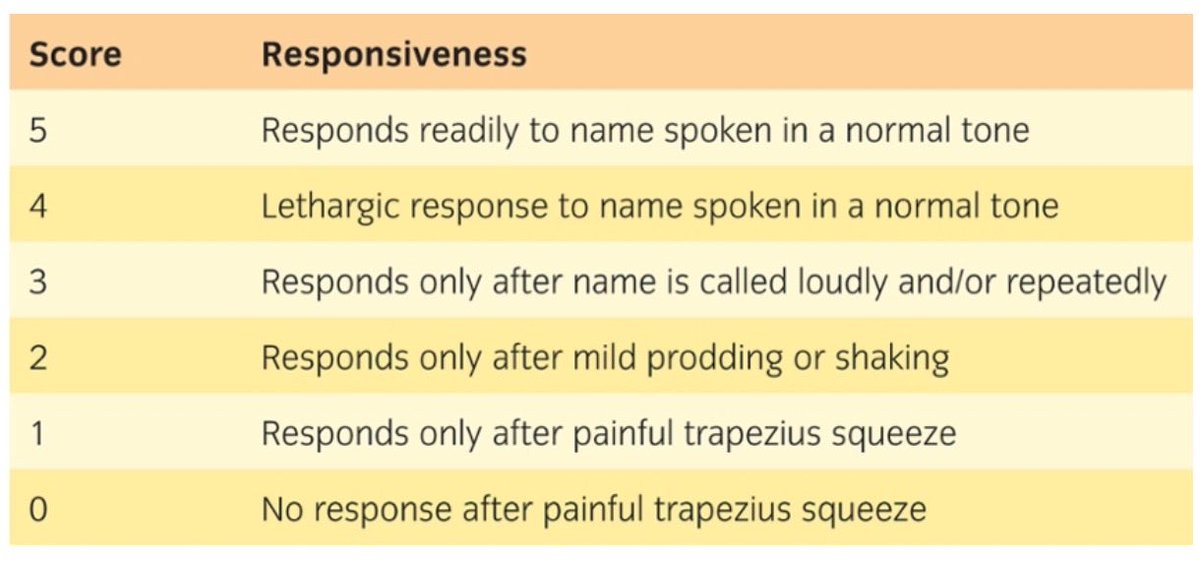
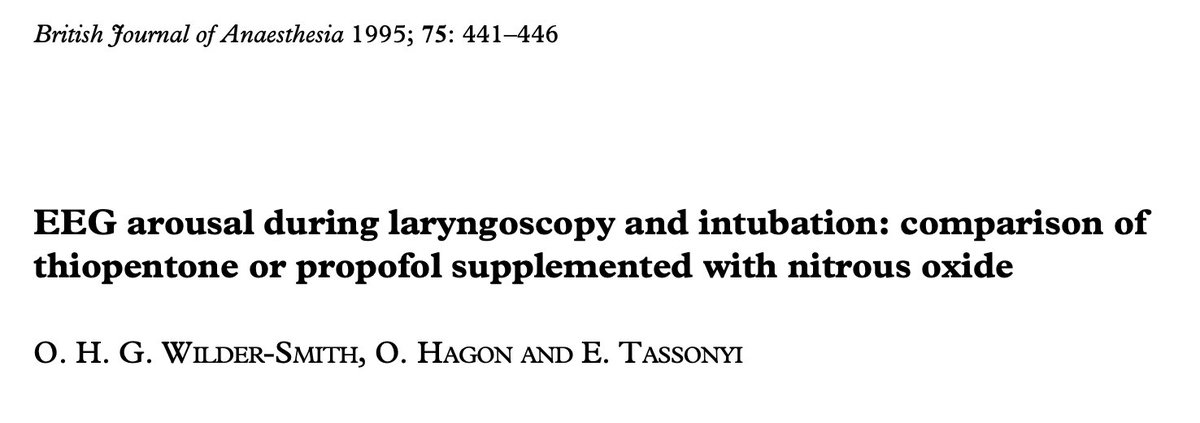
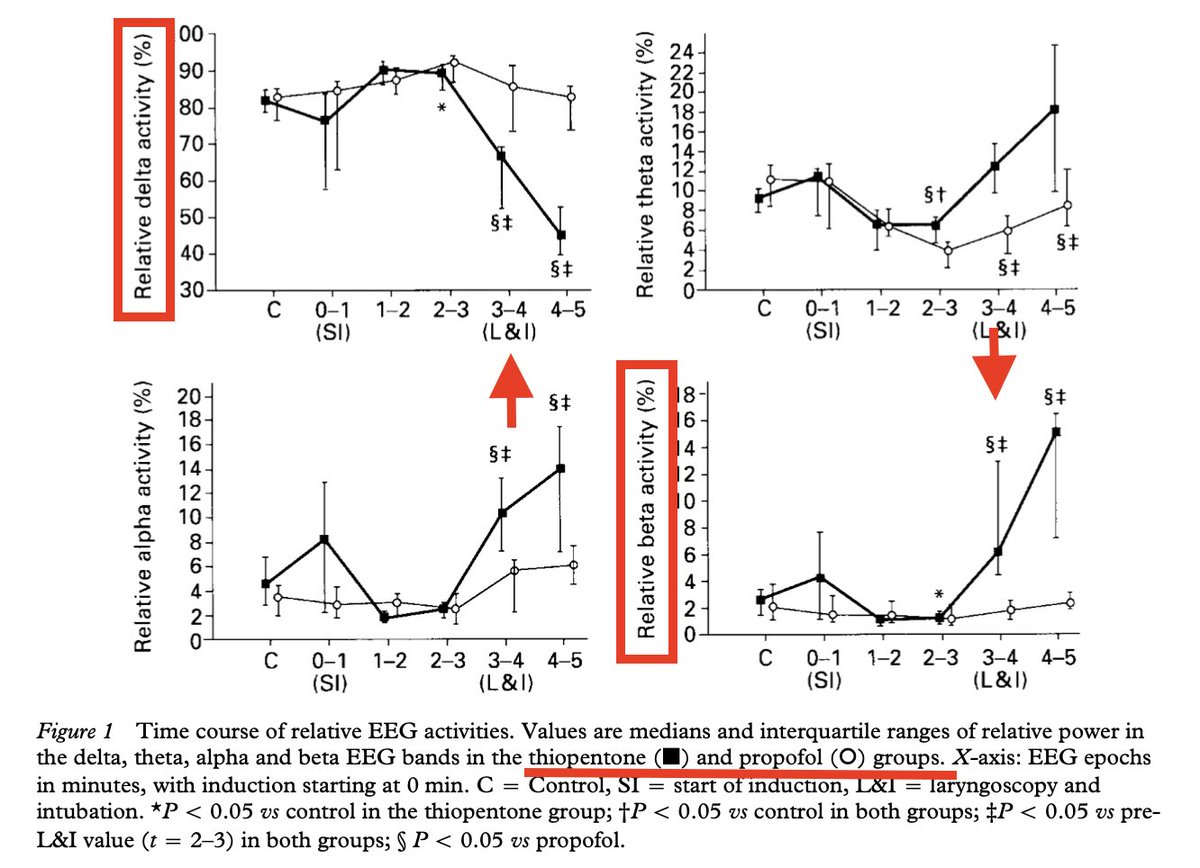
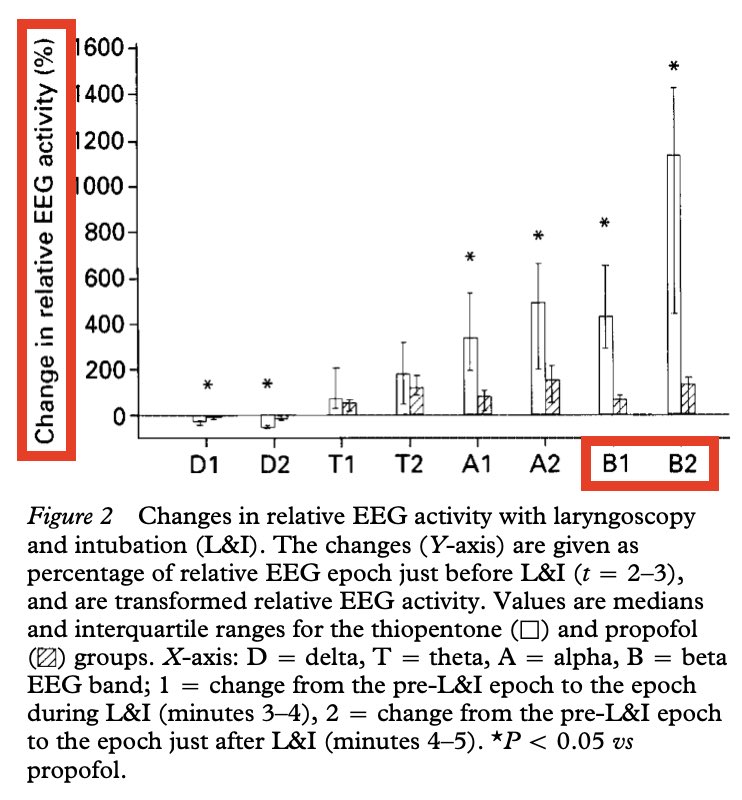
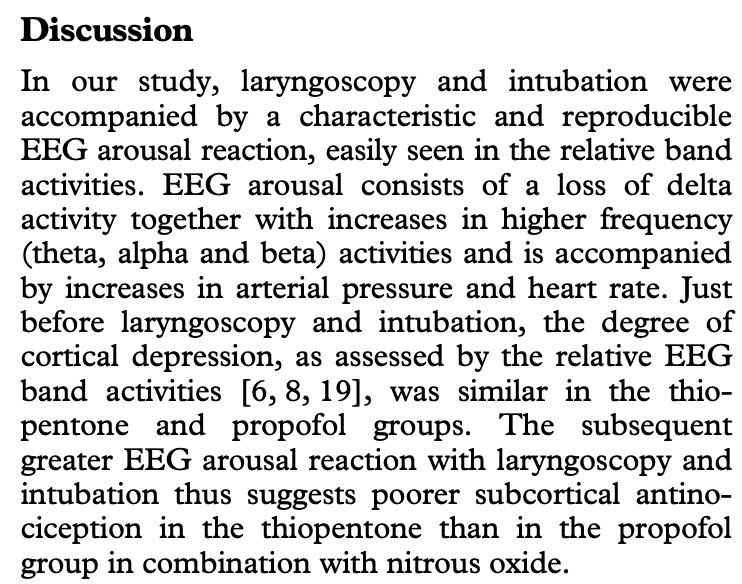 . It& #39;s down to nociception (we know propofol has an analgesic effect…). Anaesthesia is a triad after all - the classic opiate-free RSI would be a beta-arousal nightmare @Rollo002 can you see where this is heading... https://abs.twimg.com/emoji/v2/... draggable="false" alt="🤓" title="Nerd face" aria-label="Emoji: Nerd face">" title="Why… https://abs.twimg.com/emoji/v2/... draggable="false" alt="🤔" title="Thinking face" aria-label="Emoji: Thinking face">. It& #39;s down to nociception (we know propofol has an analgesic effect…). Anaesthesia is a triad after all - the classic opiate-free RSI would be a beta-arousal nightmare @Rollo002 can you see where this is heading... https://abs.twimg.com/emoji/v2/... draggable="false" alt="🤓" title="Nerd face" aria-label="Emoji: Nerd face">" class="img-responsive" style="max-width:100%;"/>
. It& #39;s down to nociception (we know propofol has an analgesic effect…). Anaesthesia is a triad after all - the classic opiate-free RSI would be a beta-arousal nightmare @Rollo002 can you see where this is heading... https://abs.twimg.com/emoji/v2/... draggable="false" alt="🤓" title="Nerd face" aria-label="Emoji: Nerd face">" title="Why… https://abs.twimg.com/emoji/v2/... draggable="false" alt="🤔" title="Thinking face" aria-label="Emoji: Thinking face">. It& #39;s down to nociception (we know propofol has an analgesic effect…). Anaesthesia is a triad after all - the classic opiate-free RSI would be a beta-arousal nightmare @Rollo002 can you see where this is heading... https://abs.twimg.com/emoji/v2/... draggable="false" alt="🤓" title="Nerd face" aria-label="Emoji: Nerd face">" class="img-responsive" style="max-width:100%;"/>
